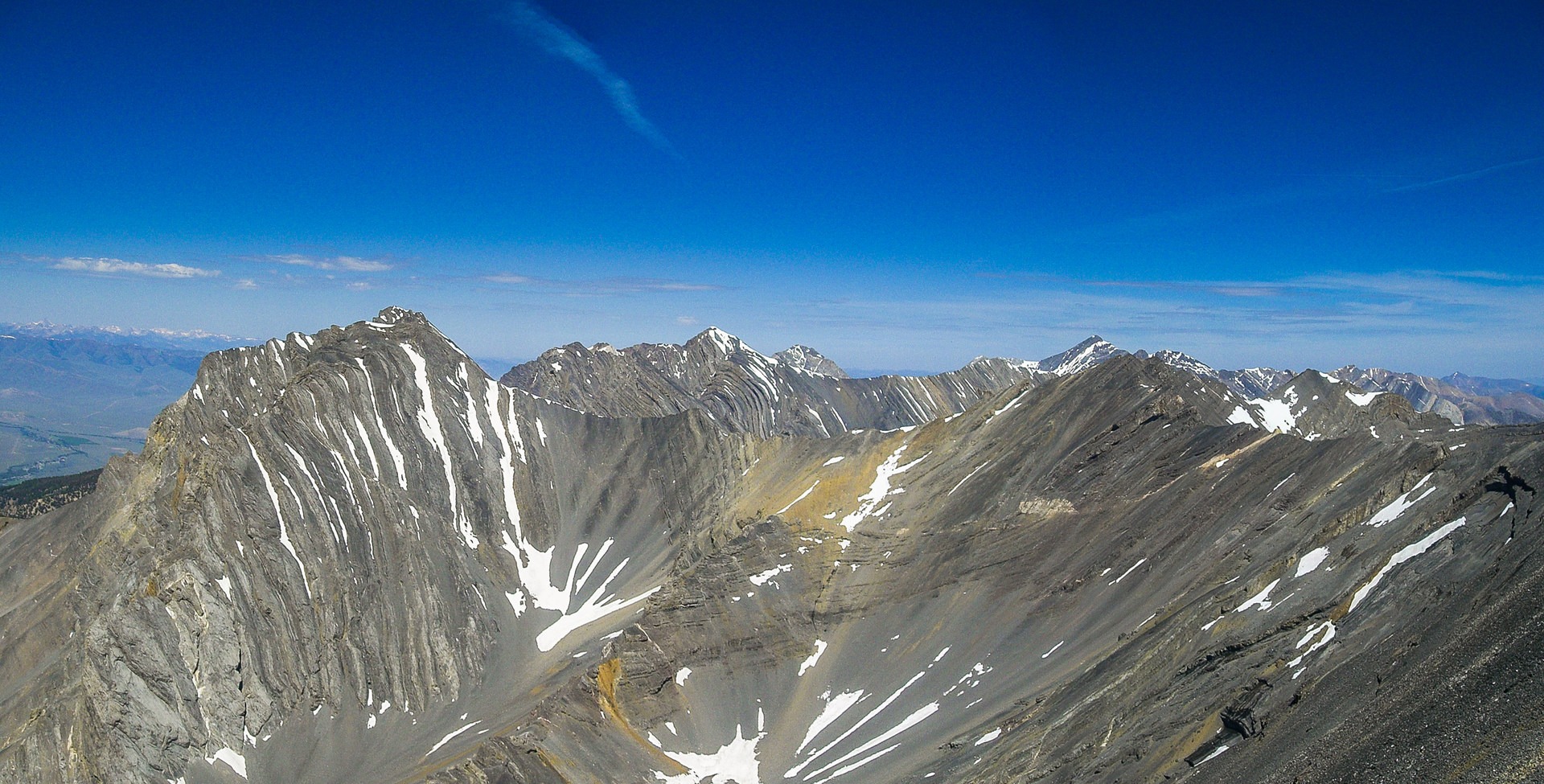Mount Breitenbach is one of Idaho's nine 12,000-foot peaks, and at 12,140 feet, it is the fifth highest peak in the state. Because of it's status as a 12er, it sees more traffic than it probably would otherwise; however, compared to many other peaks it is still lightly visited. From the summit of Mount Breitenbach, all of the other 12ers in the state are visible, including the six other 12ers in the Lost River Range.
This mountain is generally rated as a class 3 YDS climb, but there is very little actual scrambling involved. However, there are places with a lot of exposure along the summit ridge, so it would probably be more like a 2+. What climbing Breitenbach does involve is a lot of off-trail travel through a rough canyon and then miles of hiking through open scree. The scree is surprisingly solid, which makes the ascent easier but the descent much harder on the knees. At the upper end of the enormous scree field is a snowmelt waterfall cascading off the rocks above. Where the water hits the scree it disappears under a sheet of ice, revealing that the scree is just covering a perennial snowfield, (possibly a rock glacier). The upper reaches of the mountain involve a breathtaking ridgewalk to the summit with some exposure on both sides in places.
The mountain is accessed via Pete Creek on the western side of the Lost River Range. Pete Creek is a short but steep drainage with an intermittent stream. While water is usually found at some point along the hike, do not count on it and come prepared to bring your own for the entire way. Climbing in the spring and early summer make it much more likely water will be found. Pete Creek is very rough and has no trail. There is a lot of downed timber, rocky terrain, and some bushwhacking.
Mount Breitenbach has been climbed in the winter and makes for a great winter or spring ski outing. Once the upper slopes of Breitenbach are covered with snow, there are very few obstacles standing in the way of an epic ski descent. However, do not understimate the mountain. Avalanche potential can still be very high, and it would be advisable to bring and ice axe, crampons, and a helmet on a winter ascent.
Mount Breitenbach is named for Jake Breitenbach, an Idahoan that was killed on the 1963 American expedition to Mount Everest.




















Comments
Sign In and share them.